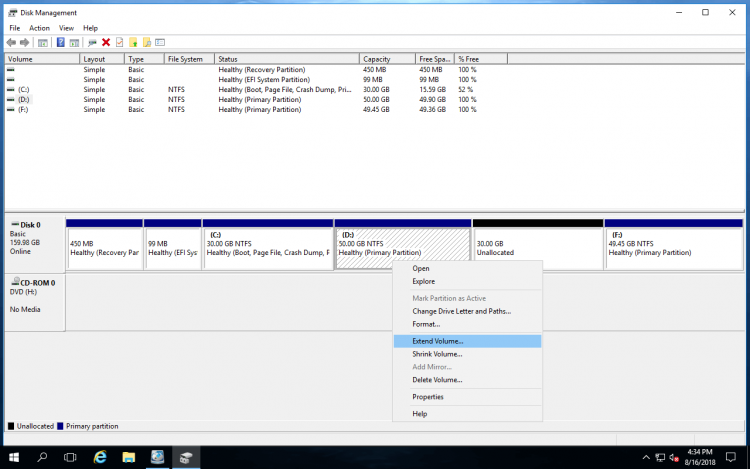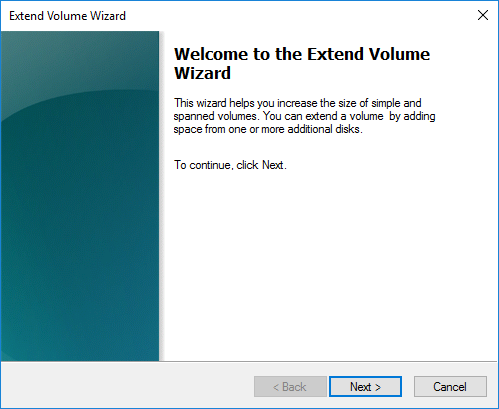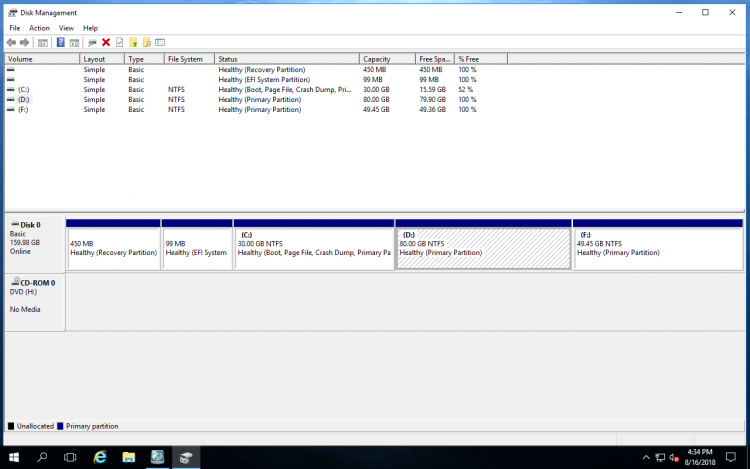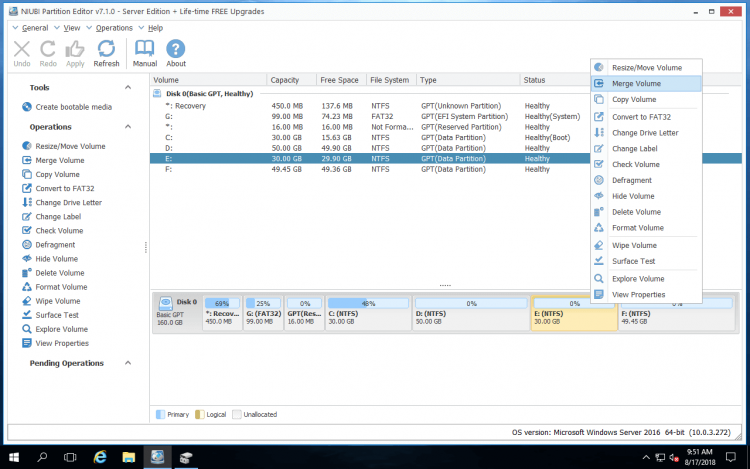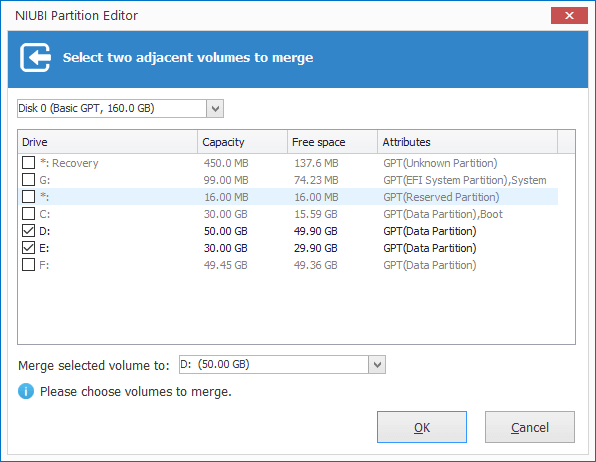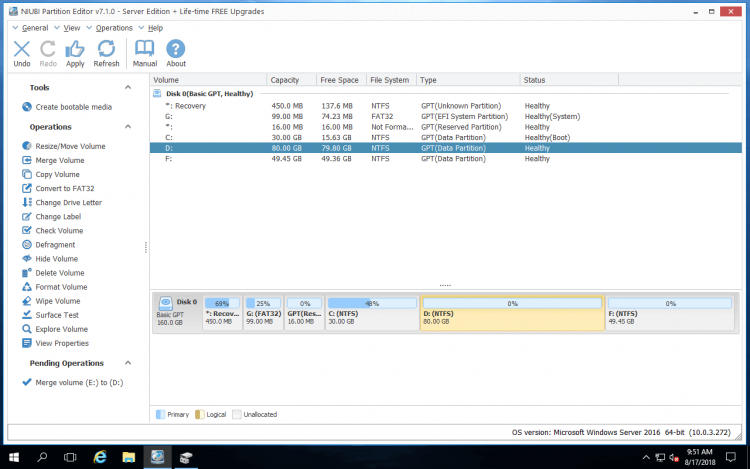Sometimes you need to merge 2 partitions for Windows 2016 server, for example: when C drive is running out of space, by merging C and D drive, free space in D will be transferred to C drive. In some servers, there are too many partitions created on a disk, it causes difficulty to identify partition and locate files. This article introduces how to merge partitions in Windows Server 2016 with native tool and safe partition software. If you want to extend a partition in Server 2016, you'd better shrink another one instead of merging them together.
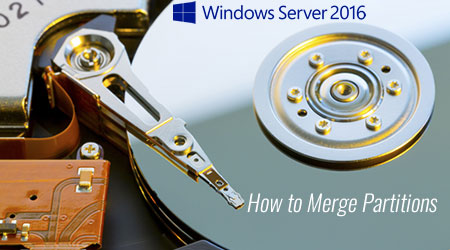
1. Merge partitions in Server 2016 via Disk Management
Windows Server 2016 has no "Merge Volume" function in native Disk Management utility, but you can combine 2 adjacent partitions with "Extend Volume" indirectly. Note: the right partition will be deleted, so don't do this if you installed programs or any services in this partition. If you decide to delete this partition, remember to transfer files in advance.
Steps to merge 2 partitions in Windows Server 2016 without software:
- Press Windows + X together on the keyboard and then click Disk Management in the list.
- Right click the right adjacent partition (here is E:) and select Delete Volume.
- Right click the left contiguous partition (here is D:) and select Extend Volume.
![Extend Volume]()
- Extend Volume Wizard will be launched, simply click Next till Finish.
![Extend Volume Wizard]()
In a while, E: drive is merged into D.
Restrictions to merge partitions in Server 2016 with Disk Management:
- It can only combine a partition into the left contiguous one, for example: merge E to D, or combine D to C.
- The left contiguous partition must be NTFS, any other types of partitions are not supported.
- The 2 partitions must be the same Primary or Logical.
- It cannot merge nonadjacent partitions.
2. Better way to combine partitions in Windows 2016 server
Comparing with Disk Management, NIUBI Partition Editor has more advantages while merging partitions in Windows 2016 server.
- It is able to combine partitions with different type, no matter they are NTFS or FAT32, Primary or Logical.
- Except C: drive, either contiguous partition can be selected as target. (You cannot merge system partition to a data volume.)
- You don't have to transfer files manually, all files in a partition will be moved to the root folder in the other one automatically.
- Much easier, only several clicks are needed.
How to merge partitions in Windows Server 2016 without losing data:
- Download NIUBI Partition Editor, right click drive D or E and select Merge Volume.
![Merge Volume]()
- Click the check-box in front of both D: and E:, and then click the drop-down box on bottom to select destination drive. If you select D:, partition E will be merged into D.
![Select partitions]()
- Click OK and back to the main window, where you'll see that partition D and E are combined together. There is a pending operation "Merge volume E: to D:" added on bottom left. Click Apply on top left to execute, done.
![Partitions merged]()
Open partition D after merging complete, there is a new folder named as "E to D (date and time)" created. All files in partition E are moved to this folder automatically.
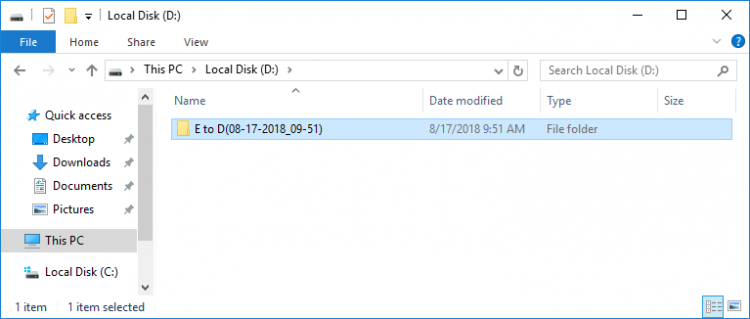
Watch the video how to merge 2 adjacent partitions in Windows 2016 server:
NIUBI Partition Editor is designed to work in its virtual mode, the operations you do won't be executed immediately, instead, they'll be listed as pending for preview. You may click "Undo" to cancel the unwanted operations or click "Apply" to take effect. Better than other software, it has 1-Second Rollback, Cancel-at-will and Hot-Clone technologies to protect system and data.
3. How to merge non-adjacent partitions
Disk Management cannot move partition or unallocated space, so it cannot merge 2 nonadjacent partitions. To do this, disk partition software is needed.
Steps to merge nonadjacent partitions in Windows Server 2016/2019/2022:
- Back up or transfer all files in drive E to other place.
- Right click E: drive and select Delete Volume.
- Right click D: drive and select "Resize/Move Volume", drag the middle of it towards right in the pop-up window, then Unallocated space will be moved to the left.
- Right click C: drive and select "Resize/Move Volume" again, drag right border towards right to combine this Unallocated space.
- Remember to click Apply to execute.
Watch the video how to operate:
4. Shortage to merge 2 partitions in Windows Server 2016
No matter which tool you use to merge partitions, one of the volumes will be removed. If you want to increase size of a partition, the best way is shrinking a drive to get unallocated space, and then add to the partition that you want to extend. In this way, no partition will be deleted. Operating System, programs, Windows services and anything else keeps the same with before.
Watch the video how to shrink and extend partitions in Server 2016:
Besides shrinking, extending and merge partitions in Windows Server 2016/2019/2022/2003/2008/2012, NIUBI Partition Editor helps move, copy, defrag, wipe, optimize, hide partition, scan bad sectors and much more.

